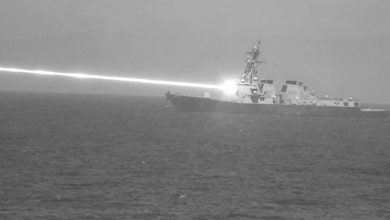Analysis: Can the US establish an alternative to NATO in Indo-Pacific region?

US will need to leverage its full spectrum of soft, smart, and hard power assets to formulate balanced or potentially unipolar collective security framework aimed at addressing or negotiating with regional competitors such as China
Assessing the prevailing strategy of the United States, particularly concerning Asia and Indo-Pacific, one must consider the present and future feasibility and potential courses of action for NATO within the geopolitical space of those regions. Will the US establish a NATO derivative to address the ascent of China and the assertiveness of Russia?
The response to these questions may yield various potential scenarios. It would be premature to conclusively assert that the US has no intentions of extending its influence or fully committing to the Asia and Indo-Pacific region in the immediate future.
This ambiguity may stem from the current priorities and engagements of US foreign policy, notably in significant global events such as the Ukraine-Russia conflict in Eastern Eurasia and the Palestine-Israel issue in the Middle East. Nonetheless, it appears increasingly evident that, sooner or later, the US will need to leverage its full spectrum of soft, smart, and hard power assets to formulate a balanced or potentially unipolar collective security framework aimed at addressing or negotiating with competitors such as China in the region.
During the Cold War, the US and its allies established military and security alliances in the Asia and Middle East regions reminiscent of the NATO. These included the Southeast Asia Treaty Organization (SEATO) and the Central Treaty Organization (CENTO), which served as security and defense bulwarks for the US and its Western allies to safeguard their global interests and protect member countries from Soviet Union aggression and subversion.
However, as times have changed, so too have interests shifted. Yet, some argue that the underlying purpose of the US remains consistent, akin to “old wine in a new bottle.” While the strategy may be aimed at addressing new competitors, the overarching strategic objective remains unchanged. In contemporary global politics, entities like SEATO or CENTO may no longer directly serve US interests, but they hold considerable and spiritual influence in shaping new strategic shifts within the region.
New US strategic offshoots in Asia-Pacific region
In the realm of international politics, especially concerning the establishment of robust and enduring global cooperation, two prevailing concepts that hold significant sway are community-building and order-establishment. Since 2013, particularly following China’s ambitious endeavors such as the Belt and Road Initiative (BRI) and the China-Pakistan Economic Corridor (CPEC) in 2017, the US has found it useful to reassess its collaborative and strategic avenues within the region. Amidst a plethora of initiatives, certain endeavors undertaken by the US exhibit a strategic orientation towards partnership.
Examples include the Indo-Pacific Strategy (IPS), which emphasizes security-focused collaboration; the Quadrilateral Security Dialogue (Quad), a trilateral security partnership involving Australia, the UK, and the US (AUKUS); and the India-Middle East-Europe Economic Corridor (IMEC), which embodies an economic strategic engagement. Understanding these initiatives is crucial for observing the US’ current strategic objectives and options in the region.
Indeed, the majority of the current policies pursued by the US appear to be more reactive rather than reflective of a proactive strategic shift. This suggests that instead of formulating long-term policy objectives, the US’ actions are often driven by short-term developments, frequently instigated by regional competitors in the Asia-Pacific region.
Need for states to create their own strategies
This reactive approach represents a loophole in the US’ broader strategic interests in the region, as it can lead to confusion among allies. Many of the US’ regional allies are now inclined to develop their own independent strategies rather than relying solely on US guidance. While they still seek support from the US, they recognize the necessity to establish their own strategic frameworks in today’s multipolar, multifaceted world.
Recent trends indicate that several US allies have begun to prioritize their own strategic agendas. For instance, France has developed its Indo-Pacific strategy, while Germany has forged its own strategic partnerships in the region. Even traditional US partners such as India, Japan, and to some extent Australia are pursuing their strategic objectives to secure their positions in the Asia-Pacific and Indo-Pacific regions.
It can be inferred that following the withdrawal of NATO forces from Afghanistan, there may be a perceived decline in US influence in the region. However, it is crucial to acknowledge that the US remains the predominant hegemonic power with extensive knowledge and involvement in the region. While US policy often reacts to its main counterpart, China, it remains a pivotal player in matters of security, economics, diplomacy, and politics within Asia-Pacific nations.
Consequently, countries in the region, regardless of their size, find themselves compelled to engage with the US due to their short-term goals and dependencies. Analysts expect this dynamic to persist for at least the next three or four decades. Furthermore, interpreting the US power shift solely through the lens of emerging powers in the Asia-Pacific region would be a misjudgment, as the US retains the capability to forge security alliances akin to NATO. However, it is almost crystal clear that is it impossible that such developments will materialize in the foreseeable future.
Source: AA /





